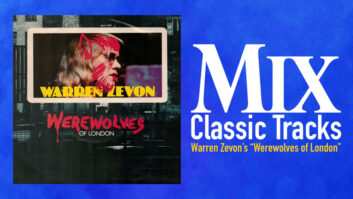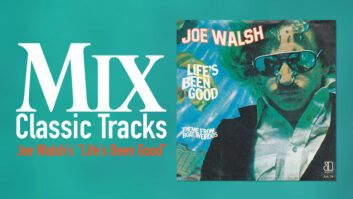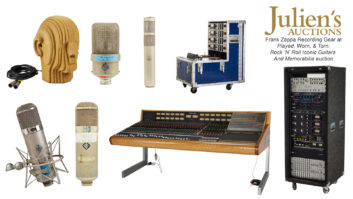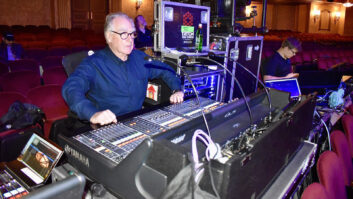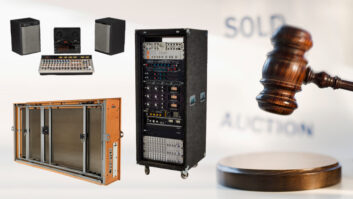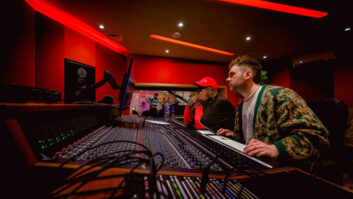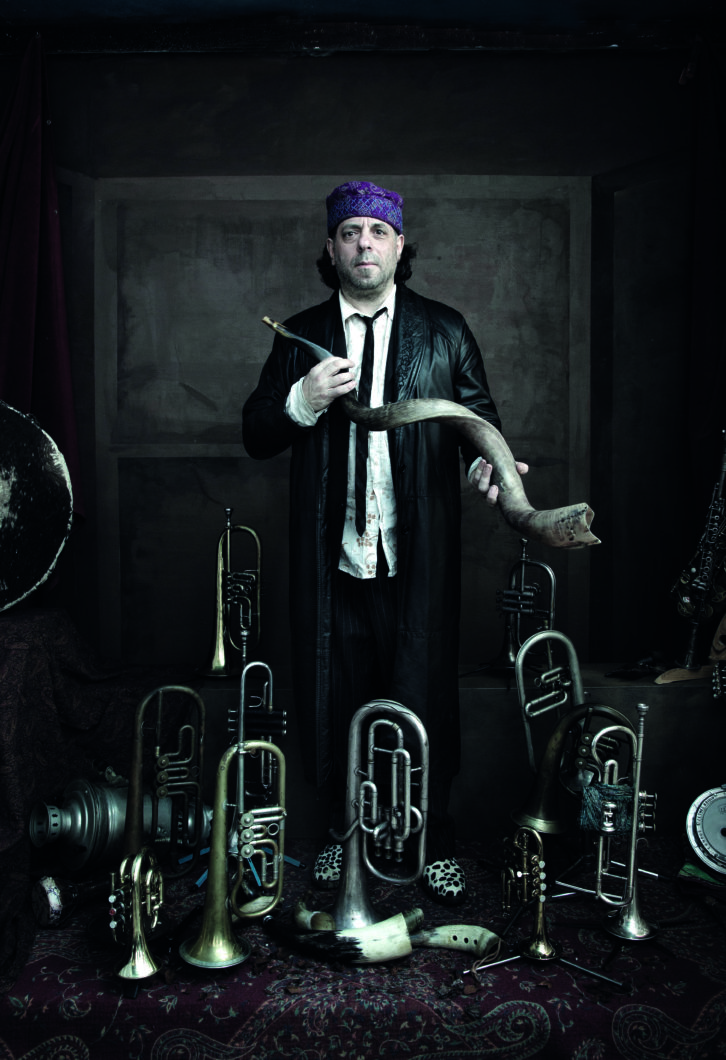
Here’s something to contemplate: Ask people of different generations, ethnicities and locales to define “ghetto,” and the answers will differ remarkably.
Frank London addresses this complex association in his latest release, Ghetto Songs, which includes music that spans centuries, from the 1600s to the 1970s.
The seeds of the project began five years ago when London was invited to Venice by Beit Venizia, a group wishing to shine light on the 500th anniversary of the first ghetto in Italy, established in 1516. London notes that in this circumstance, the ghetto was a positive development for members of the Jewish faith, who previously had not been allowed to live inside the city limits.
“Jews were working in Venice but not allowed to spend the night there,” London explains. “They were forced to be commuters, and if you’ve ever been to Venice, you know commuting is hard because you have to cross this huge water.”
Trumpeter-composer London, co-founder of the Grammy Award-winning Klezmatics, has worked with artists as wide-ranging as Itzhak Perlman, Pink Floyd, LL Cool J, Mel Tormé, Lester Bowie, They Might Be Giants, David Byrne, Jane Siberry and Ben Folds Five over the years.
He first performed Ghetto Songs live in Europe and was planning to record the studio album in much the same manner. But by the time a grant came through to cover the costs, the pandemic was in full swing and Brooklyn-based London was back home. He had to replace all the musicians, except for vocalist Sveta Kundish, who recorded in Berlin. The album was recorded to Pro Tools at EastSide Sound in New York City, which has six iso booths surrounding a main live room.
“[The layout] gave us the freedom to isolate most of the musicians,” explains engineer Marc Urselli. “This was exponentially important during the Covid-19 pandemic because it allowed everyone to be in separate spaces but have a direct line of sight with each other for optimal and organic performance.”
The collection includes 17th century music and poetry from the Venice ghetto (works from Solomone Rossi, Benedetto Marcello, and Sara Coppia Sulam); a piyyut (Jewish liturgical poem) from Morocco’s mellah, the Jewish quarter; kwela (pennywhistle-based street music with jazzy underpinnings and a skiffle-like beat) from South Africa’s townships; the music of Cantor Gershon Sirota, who lived and died in the Warsaw ghetto; and War’s 1970s anthem “The World Is a Ghetto.” Where there were only lyrics or poetry, London would write the music, as he did for “Tahi Taha” in an effort to preserve the Judeo-Venetian language.
“I love every song in this album, and I love working with these musicians who can come together and traverse all these borders,” London says. “There’s a joy to playing this music together. I think Karim [Sulayman] singing ‘La Barcheta’ is the most beautiful thing. I still want to cry.
“I love each singer, too!” he adds. “First Karim comes out, then Sveta comes out, and then they do a duet. I think [Yaakov] ‘Yanky’ Lemmer is the greatest of the living Ashkenazic cantors”—London gushes about his performance on “Oseh Shalom” and then on “Retsei,” which he describes as “deep”—“And Brandon Ross, the guitarist on the whole record, is not really known as a singer, but he stands up right next to the other three amazing singers on ‘The World Is a Ghetto.’”
Urselli used a Braingasm Labs large-diaphragm condenser microphone through a Focusrite ISA428 preamp to capture nearly all of the vocals. “Because this album had different singers, I wanted clarity, versatility and transparency for the vocals, and I wanted a microphone and a preamp that would work well regardless of the singer,” he says.
TRACKING AT EASTSIDE SOUND
“I think Frank was able to masterfully weave between folk, opera, klezmer, and jazz in a way few others can,” Urselli says. “I insisted that we had to record it properly, in a studio that allowed for certain liberties and had certain features. I came up with a plan for which instruments I wanted to isolate in which rooms so that I would have the ability to blend things together with maximum control. The lack of bleed and leakage allowed me to crossover different sections of the ensemble the way we would have performed a diagonal soft cut when splicing analog tape. But Frank’s ensemble is so on top of it that we barely had to do any such edits. Once I came up with the plan for recording, my second engineer, Duff Harris, set it up.”
Urselli put the drums and the vibraphone in the largest of the iso booths, the bass in the second largest, and the guitar amp in the smallest. He put the guitar player in the live room with the piano and the accordion. He used the most centrally located booth for London and his trumpet so that London could see everyone and conduct. Two more booths were used for vocals and cello.
“I recorded drums using a combination of Lewitt mics on the kick, Shure mics on the snare, Sennheiser MD-421s on toms, a Microtech Gefell M940 on the hi-hat, and an Ehrlund EHR-T stereo condenser microphone on overheads,” Urselli notes. “All preamps were Harrison and API.
“For the vibraphone, I used Ehrlund EHR-D through a very transparent Japanese microphone preamp called Sym Proceed,” he continues. “On upright bass, I used a KM184 and another BrainGasm Labs microphone, both through Vintech X73s. The guitar was tracked through a [Shure] 57 and a dynamic Aston Stealth mic through vintage Altec preamps. I put the piano through an Ehrlund EHR-M and the accordion through an EHR-M1, all going through API preamps. The trumpet mic was a Coles 4038 and the cello was another KM184, and they were going through Focusrite preamps.”
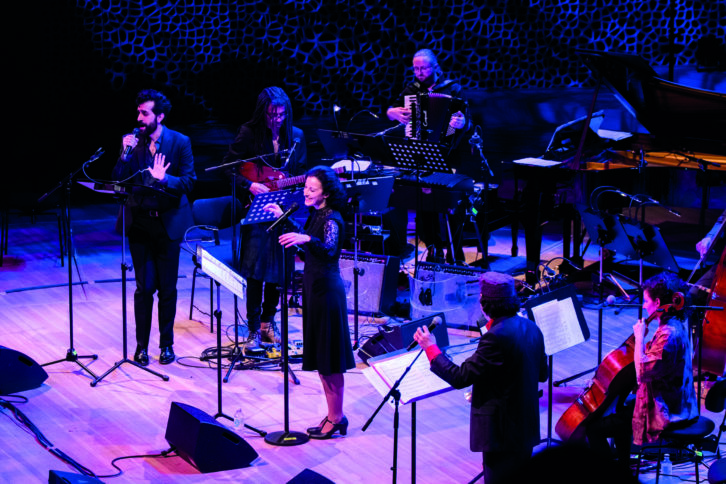
BIGGER THAN MUSIC
Although compositions are in Judeo-Venetian, Yiddish, Hebrew, Italian and English, for those musicians or singers who didn’t speak a particular language, London made sure to impart the meaning and emotion behind the words so that it could be conveyed in the performance.
“Any time I have the opportunity to make art or music that talks to some political issue and gets people thinking, then I feel like I’m doing something in music bigger than the music itself,” London says. “The dialog about ghetto is really important because everyone has misconceptions about ghettos. Everyone thinks of the ghetto of their experience, and they don’t see that there are all these other ghettos.
“You talk to someone in their 20s in America and you say ghetto music, and you know they’re not thinking about Yiddish songs in Poland,” he continues. “If you’re in Germany and you say ghetto, they’re thinking of these sad songs and people dying or fighting against it. In Brazil you are going to talk about the favelas. Not all ghettos are the same. I love that we can enter into a dialog through the project.”


